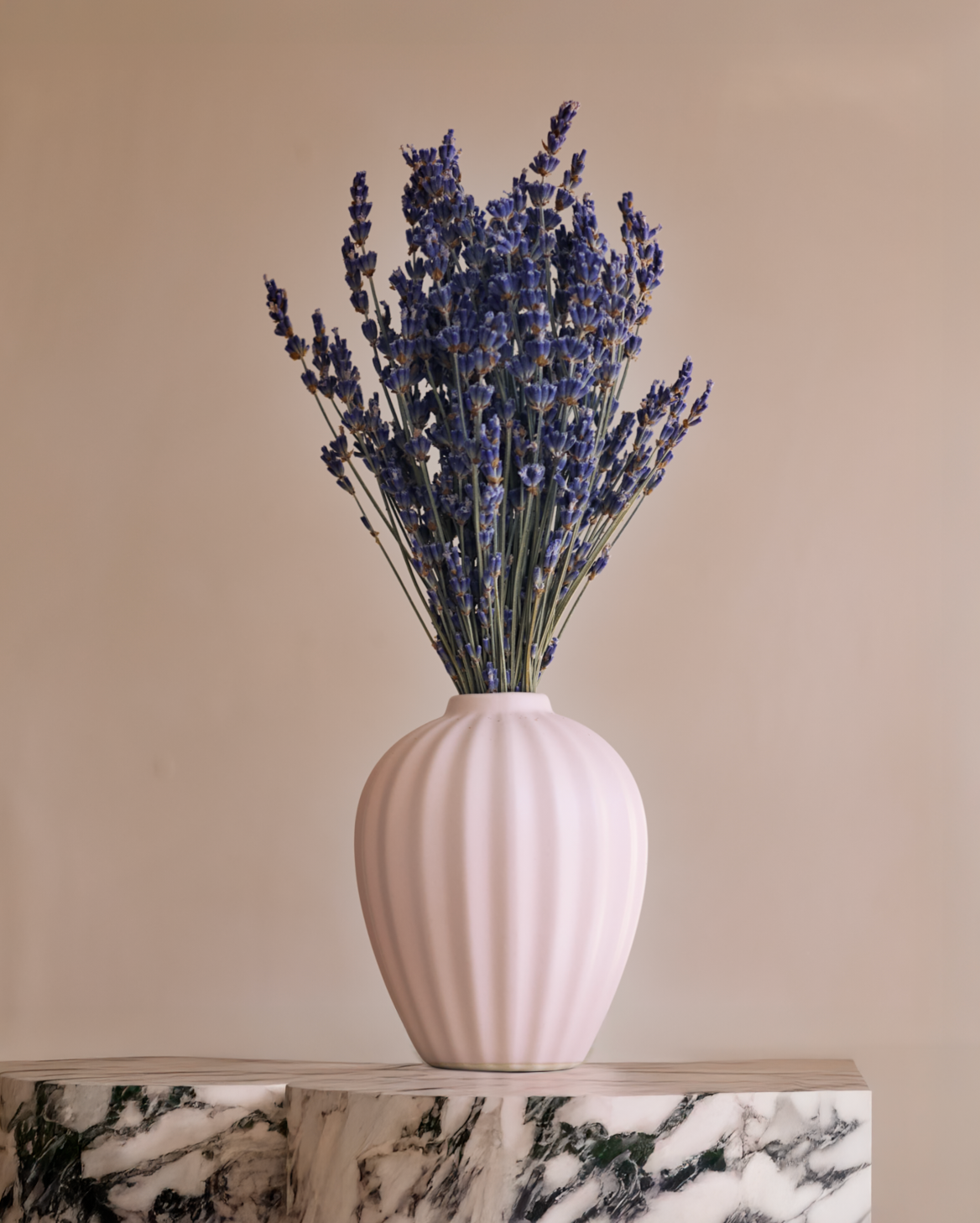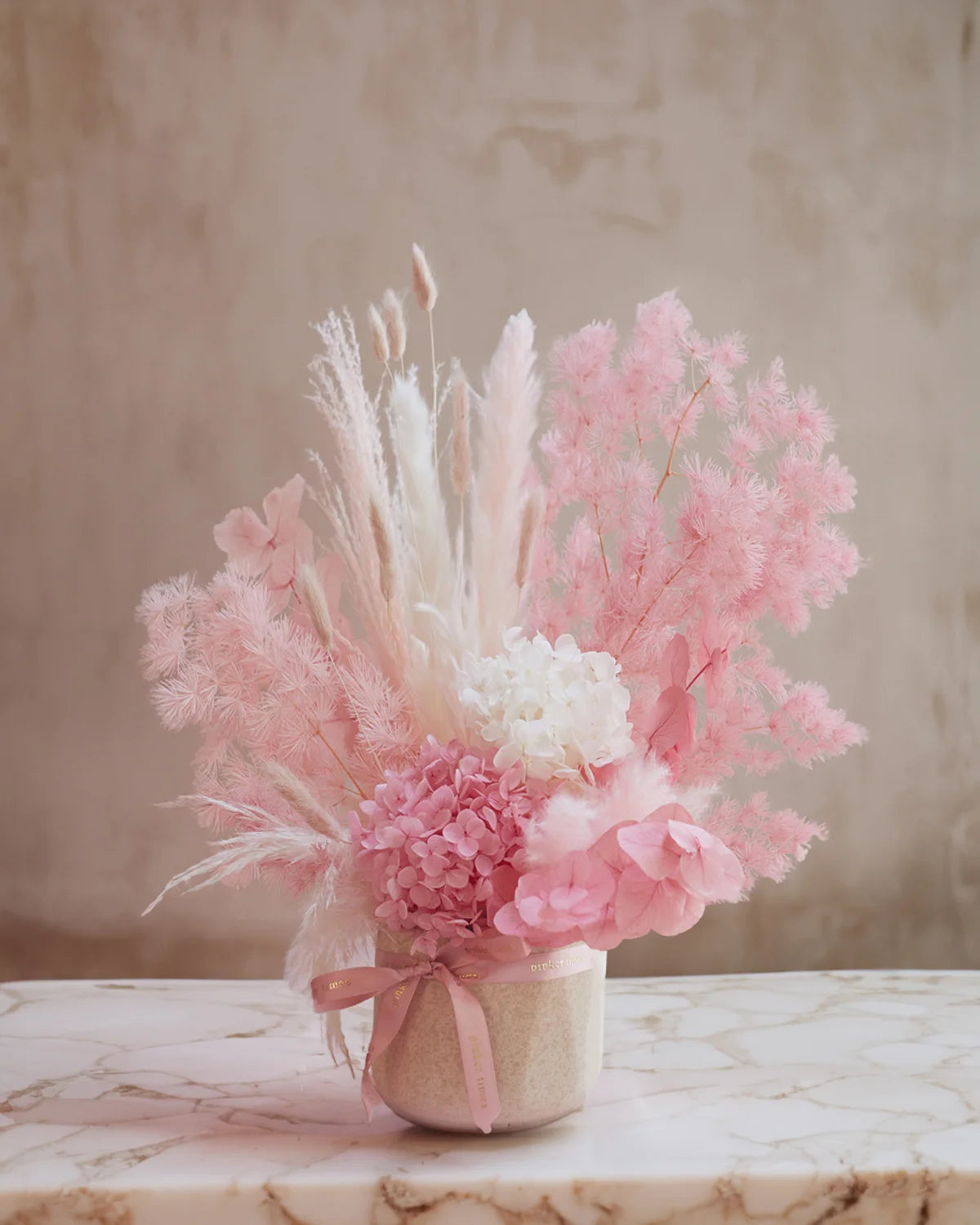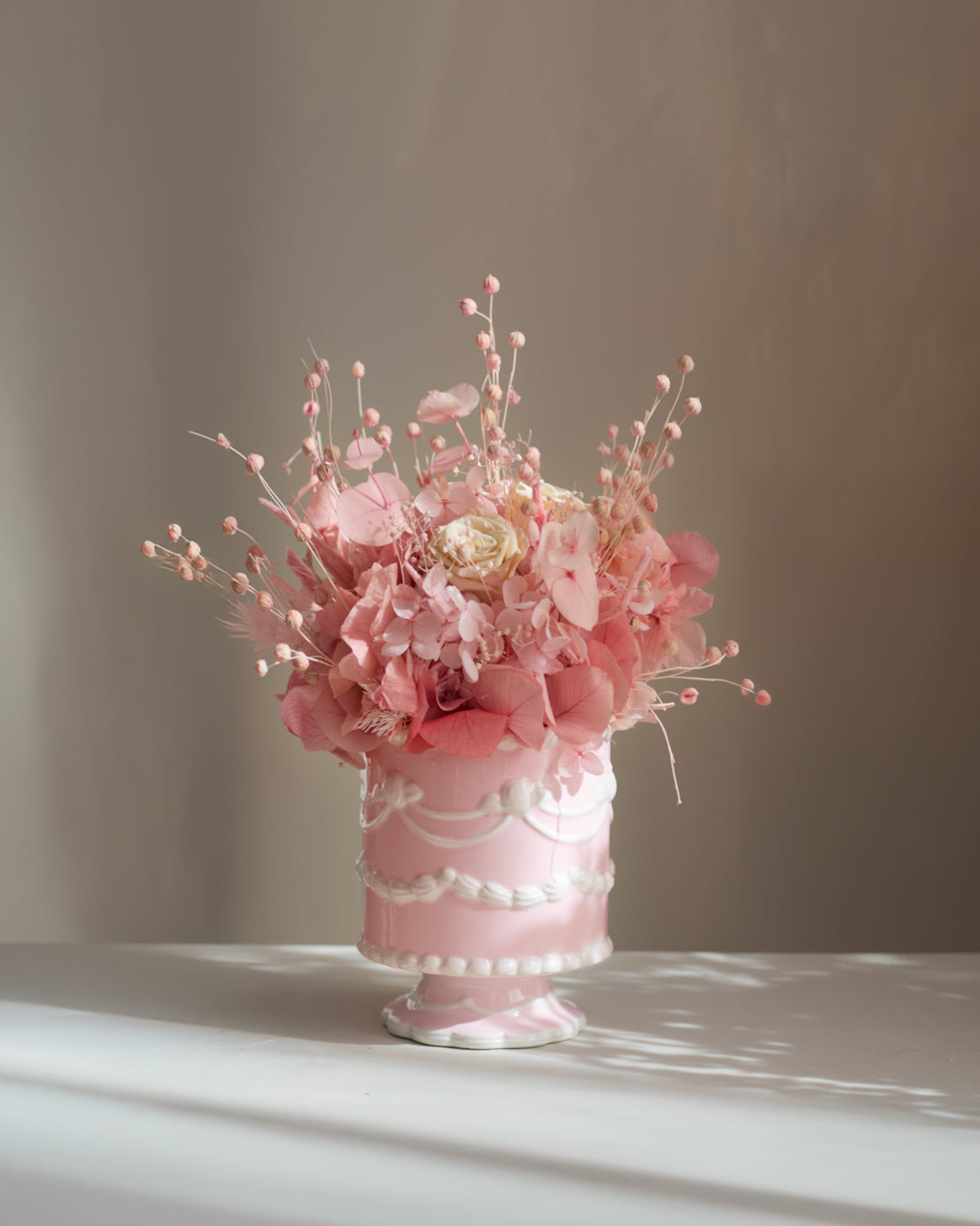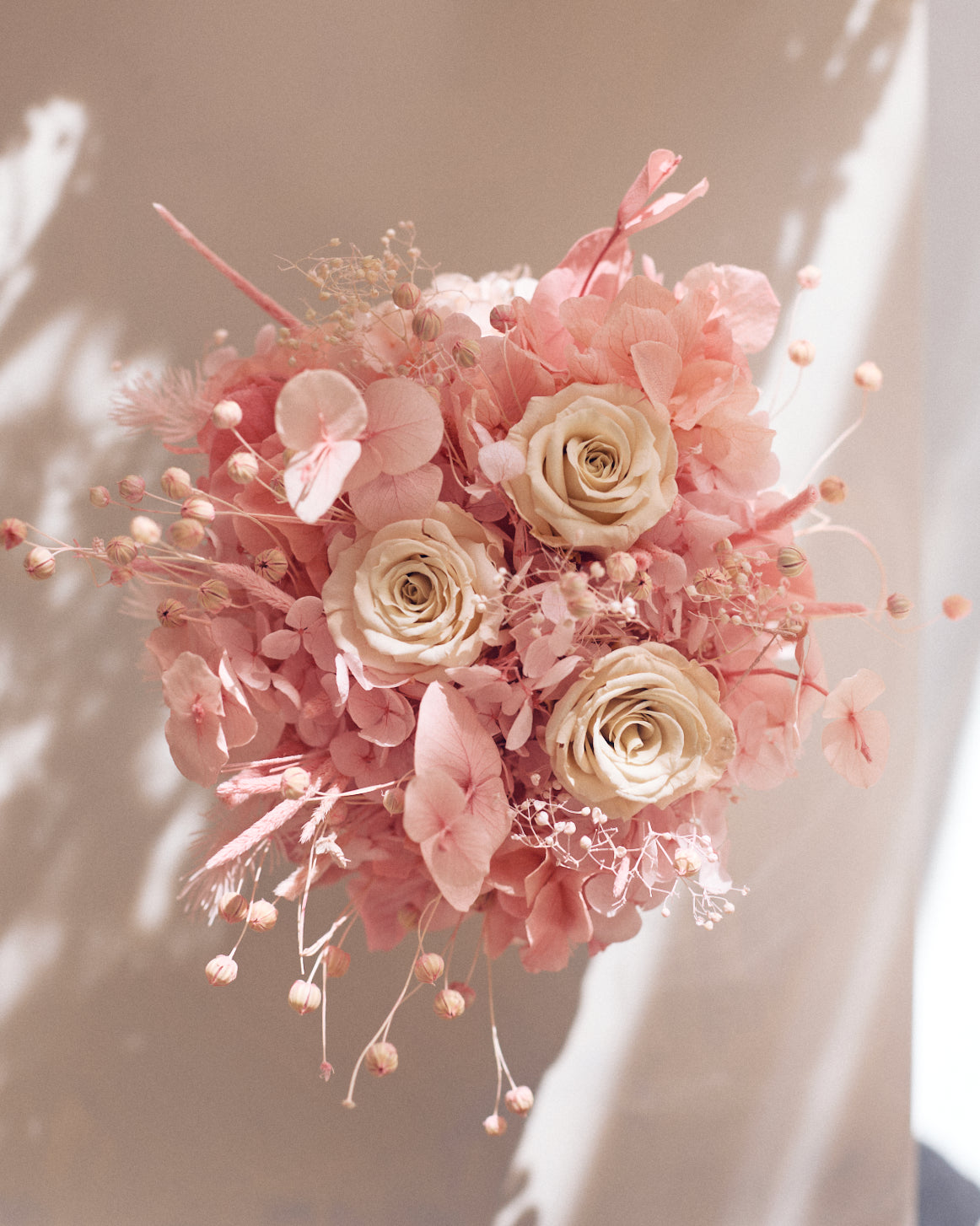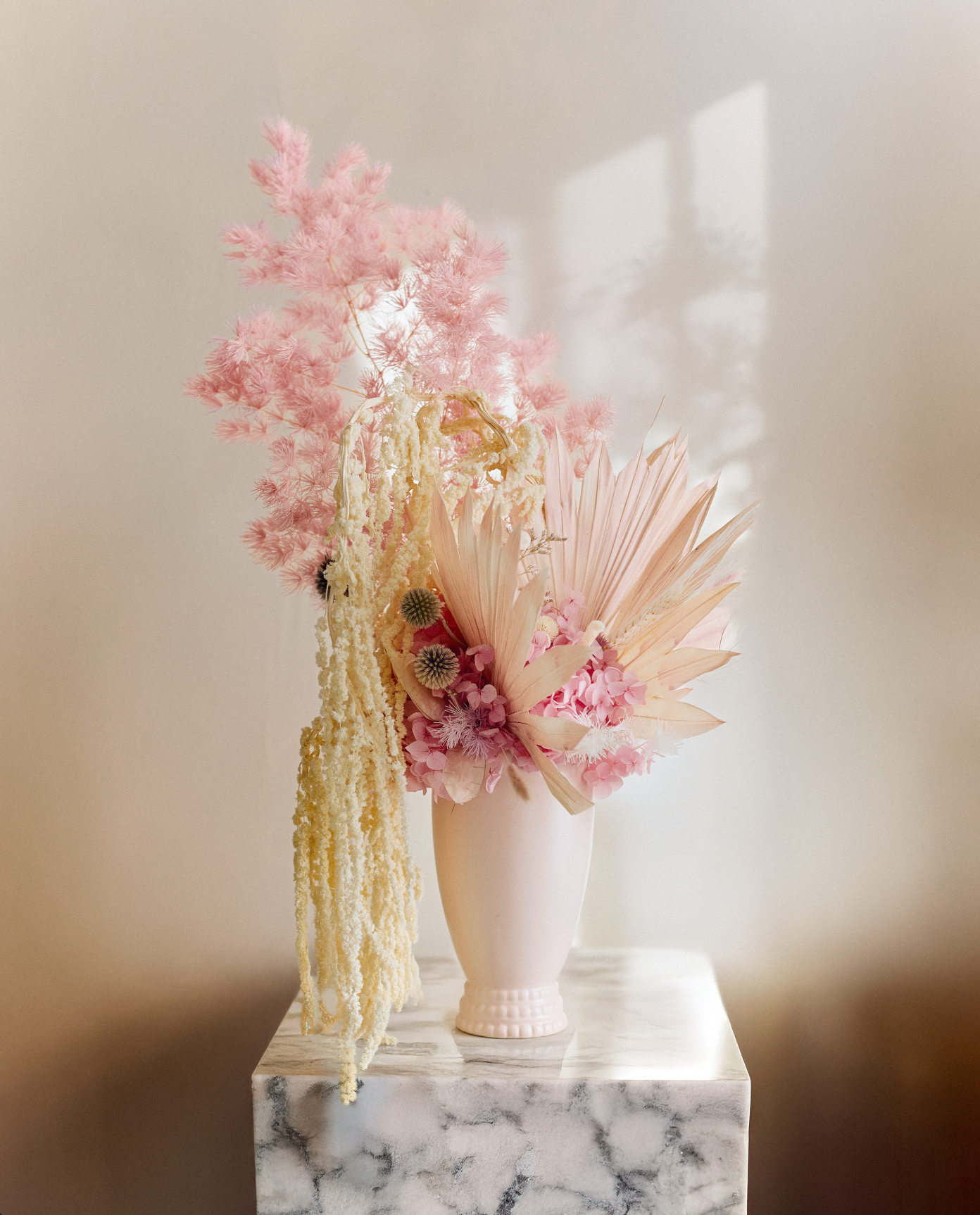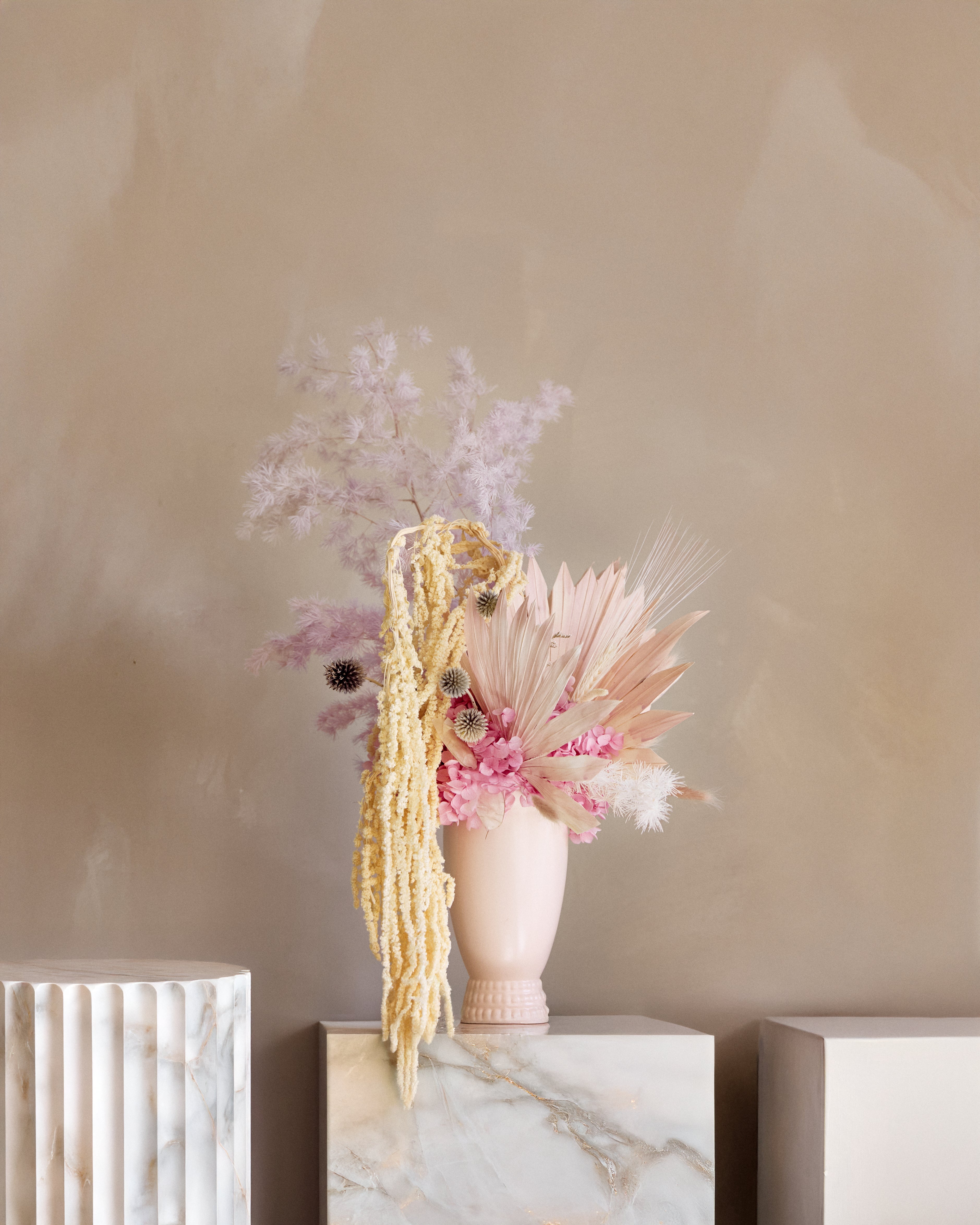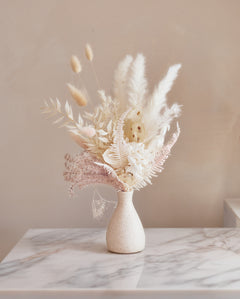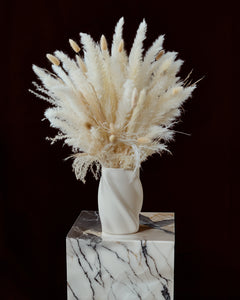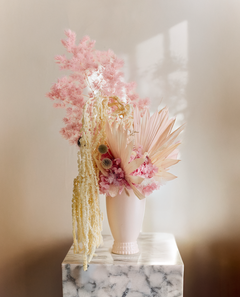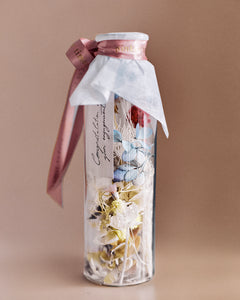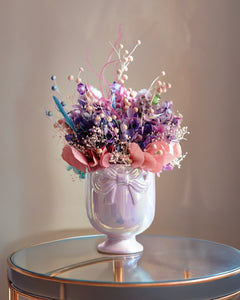Earlier this year, I was selected to audition for my first TED Talk at UPenn, talking about my approach to the intersection between art and commerce. At the end, I was asked, "What do you think the difference is between your art and a traditional painting art on the wall?" I froze a little, my first impression was "what a question." I gave an OK answer. Didn't make the cut for the TED Talk and was told to try again next year.
I've always been a slower thinker, and I believe that if that question is valid at all, it would require one to sit down and write an essay about it. The temporary nature of my creations has always been powerful to me, no need defending. But what I've learned over this experience is that it is important to be prepared to defend what you do. If I could give the answer again, it would be that the value of this is not for one person to decide.
The canvas of my work is time itself, while traditional painting conquers it. At pinker times, we create floral installations and arrangements - some fresh that last mere days, others preserved that remain for years. But even these preserved pieces, lasting 6-7 years, embrace a different relationship with time than a painting that might hang for centuries. Our works acknowledge their own mortality, breathing and ultimately dissolving back into the world that birthed them.
This fundamental difference extends to how we experience each art form. When you stand before a painting, you witness an artist's completed vision, frozen in time. When you experience our floral installations, you become part of an unfolding story, ever-changing and alive. The painting exists without you; my work invites your presence, changing subtly with the light, the season, even the humidity of the room. It's the difference between receiving a letter and having a conversation.
These living qualities create a unique emotional resonance. When someone sends a bouquet, they're sharing a moment with the recipient - not just an object, but a feeling made tangible. When someone orders flowers for themselves, these blooms serve as a gentle reminder to be present and to admire temporary beauty. In our digital-native society, where permanence is often illusory but disconnection very real, these tactile experiences of beauty create meaningful touchpoints for authentic human connection.
This connection extends beyond individual experiences to wider social impact. When clients choose a permanent installation, they're not just buying art – they're supporting an artist ethos, allowing for growth that sustains an entire creative ecosystem. This commercial exchange transcends mere transaction to become a form of patronage that preserves something increasingly precious in our culture: the appreciation of craftsmanship and natural beauty in a world of mass production.
My approach doesn't exist in isolation - it stands in a rich artistic tradition of ephemeral work. Like Cai Guo-Qiang's explosive gunpowder drawings that exist fully only in the moment of their creation, my arrangements honor the beauty of transience. They ask us to value the experience as much as the artifact, challenging conventional notions of art's value being tied to permanence.
Far from diminishing this value, our digital age actually enhances it. In a world where everything can be photographed and shared infinitely, my work gains rather than loses power. The photograph of a floral installation can never capture its scent, the subtle movement of petals in air currents, or how it transforms a space. The digital shadow reminds us of what cannot be reproduced, making the in-person experience more precious, not less.
Traditional art and my approach aren't enemies - they're different languages expressing complementary truths. Paintings speak to our desire for legacy and permanence; my work honors the beauty of transience. Together, they form a more complete picture of what it means to be human: creatures who both resist and embrace the passage of time.
